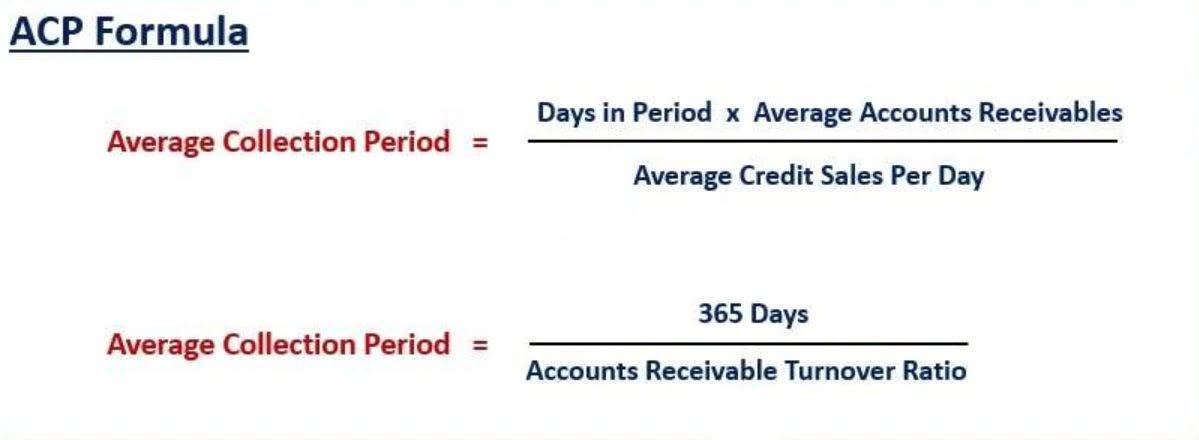Content

Yes it is always 100%,definitely the sales will be used in the income statement. It is useful information with horizontal format but please update this article along with vertical format because it’s new corporate trend of presenting accounting statement .. Peggy James is a CPA with over 9 years of experience in accounting and finance, including corporate, nonprofit, and personal finance environments. She most recently worked at Duke University and is the owner of Peggy James, CPA, PLLC, serving small businesses, nonprofits, solopreneurs, freelancers, and individuals. The net income margin also improved in line with the operating income margin.
Current Ratio: Definition, Formula, Example – Business Insider
Current Ratio: Definition, Formula, Example.
Posted: Fri, 12 Nov 2021 08:00:00 GMT [source]
Although these are a little different, the formula above is the starting point for both. We’ll explain vertical vs. horizontal common analysis, and then show you how to use this formula with a few common size analysis examples. Expressing changes as percentages is usually straightforward as long as the amount in the base year or period is positive—that is, not zero or negative. Analysts cannot express a $30,000 increase in notes receivable as a percentage if the increase is from zero last year to $30,000 this year .
How To Prepare An Analysis Of A Financial Statement
If cash is $8,000 then it will be presented as 2%($8,000 divided by $400,000). If the accounts payable are $88,000 they will be restated as 22% ($88,000 divided by $400,000). If owner’s equity is $240,000 it will be shown as 60% ($240,000 divided by $400,000). The vertical analysis of the balance sheet will result in a common-size balance sheet. The percentages on a common-size balance sheet allow you to compare a small company’s balance sheets to that of a very large company’s balance sheet.

Both these techniques are different in all aspects, but they do help analyse the trend of the item of interest. The vertical analysis considers each amount on the financial statement listed as a percentage of another amount. On this balance sheet spreadsheet, you’ll see the horizontal and vertical analysis excel model.
This percentage can be used to compare bothbalance sheetandincome statementperformance within the company. Much like ratio analysis, vertical analysis allows financial information of a small company to be compared with that of a large company. The common size percentage can also be used to compare different companies within the same industry or companies that use different currencies. The most common use of vertical analysis is within a financial statement for a single reporting period, so that one can see the relative proportions of account balances. Vertical analysis is also useful for trend analysis, to see relative changes in accounts over time, such as on a comparative basis over a five-year period. For example, if the cost of goods sold has a history of being 40% of sales in each of the past four years, then a new percentage of 48% would be a cause for alarm.
Accountingtools
The accounting conventions are not followed vigilantly in the vertical analysis. ExpensesOther expenses comprise all the non-operating costs incurred for the supporting business operations. Such payments like rent, insurance and taxes have no direct connection with the mainstream business activities. A few years ago we as a company were searching for various terms and wanted to know the differences between them. Ever since then, we’ve been tearing up the trails and immersing ourselves in this wonderful hobby of writing about the differences and comparisons. We’ve learned from on-the-ground experience about these terms specially the product comparisons.
- The accounting conventions and concepts are not vigilantly followed in vertical analysis.
- Find out a little more about vertical analysis in accounting, including horizontal analysis vs. vertical analysis, with our comprehensive article.
- Expressing the corresponding amounts on the other years’ financial statements as a percentage of base-year or period amounts.
- For example, if total assets equal $500,000 and receivables are $75,000, receivables are 15 percent of total assets.
- The only difference is that each line item on this accounting balance sheet is expressed as a percentage of total assets.
By doing this, we’ll build a new income statement that shows each account as a percentage of the sales for that year. As an example, in year one we’ll divide the company’s “Salaries” expense, $95,000 by its sales for that year, $400,000. That result, 24%, will appear on the vertical analysis table beside Salaries for year one. In accounting, a vertical analysis is used to show the relative sizes of the different accounts on a financial statement. It is a relatively more potent tool than horizontal analysis, which shows the corresponding changes in the finances of a particular unit/ account/department over a certain period of time.
Common Size Analysis Examples
Thereby, achieving a goal of the budgeting process to determine the firm’s game plan. This ratio is a measure of the ability of a firm to turn Inventory into Sales. In this case, the higher the ratio, the better the business is using Inventory. Because they are turning over their Inventory without the cost of it becoming obsolete.
- Common size analysis can help you determine how your company is performing year over year, and compared to competitors.
- The vertical analysis raises these questions, but it cannot give us the answers.
- Vertical analysis is used to analyze the different accounts of the financial statements and describe the changes in the relative size of each item.
- The proportion of fixed assets and current assets to the total assets is 37.47%.
The financial statement analysis is very helpful for management to take a necessary decision at right time with the right information. Vertical analysis is the most fundamental method of financial statement analysis. In the vertical analysis, all the item which existed in business lined up into a financial statement in form of a percentage on the base of the base figure”. Horizontal analysis is used in financial statement analysis to compare historical data, such as ratios or line items, over a number of accounting periods. Vertical analysis makes it much easier to compare the financial statements of one company with another, and across industries.
Chapter 12: Financial Statement Analysis
Unlike horizontal analysis, which compares evolution between different years, vertical analysis compares how much an account holds towards the total group of accounts to which it belongs. The current assets formula determines that the “total current assets,” which are the total of all assets that can be converted to cash within one year, makes up 37% of the company’s total assets. In contrast, current liabilities, which are debts due within one year, makes up only 30% of the company’s total assets.

It can be done with the company’s Financial Statements or with the use of the Common Size Statements. Without analysis, a business owner may make mistakes understanding the firm’s financial condition. For example, an Assets to Sales ratio is a measure of a firm’s productive use of Assets.
Free Accounting Courses
So, it is useful in comparing the performance of companies with different scale of operations. In ABC Company’s case, formula for vertical analysis we can clearly see that costs are a big reason profits are declining despite the company’s robust sales growth.
Compare each liability with the value of the total liabilities of the company. The mortgages, debentures, bonds and equity capital are compared to the total liabilities of the company. Repeat the same procedures with your previous year’s income statements to ascertain whether your costs went up, profits declined or the rates of taxes increased.
How Do You Calculate Vertical Analysis Of A Balance Sheet?
The primary aim of horizontal analysis is to keep a track on the behaviour of the individual items of the financial statement over the years. Conversely, the vertical analysis aims at showing an insight into the relative importance or proportion of various items on a particular year’s financial statement. Horizontal Analysis is undertaken to ascertain how the company performed over the years or what is its financial status, as compared to the prior period. As against, vertical analysis is used to report the stakeholder about the portion of line items to the total, in the current financial year. You are the CFO of the Illustration Hotel, and after performing a horizontal analysis on your P&L statement for the year 2018, you understand how the volume of your business has evolved from 2017.
Here highlight – I’m gonna undo one time, my bad – autofill down and then just tell it right here to fill without formatting. Now go make a percentage – there you go and once again you get rid of those. Let me shrink my screen in just a little bit – I’m in cell B20, this is going to simply equal V6 divided by B6 and once again I’m gonna press the F4 function key. As you can see, each account is referenced in proportion to the total revenue.
Vertical analysis helps in understanding the composition of various components such as expenses, cost of goods sold, liabilities, and assets. With a Horizontal Analysis, also, known as a “trend analysis,” you can spot trends in your financial data over time. There are various formats for creating a Horizontal Analysis but the most popular is to display the variance between Income Statements in dollar amounts and percentage. The difference in percentage is computed by taking the dollar difference in an Income Statement item and dividing it by the base year. Vertical analysis makes it easier to understand the correlation between single items on a balance sheet and the bottom line, expressed in a percentage.
The Financial StatementsFinancial statements are written reports prepared by a company’s management to present the company’s financial affairs over a given period . Vertical analysis of financial statement provides a comparable percentage which can be used to compare with the previous years. Example of the vertical analysis of the financial statement, which shows the total in amount and percentage. The vertical analysis of an income statement results in every income statement amount being restated as a percent of net sales. This allows them to chart the trend growth and propose a better plan of action. Vertical analysis, instead, just takes each line or amount in the financial statement as an individual percentage of the whole amount.
Management sets a base amount or benchmark goal to judge the success of the business. The base amount is usually taken from an aggregated from the same year’s financial statements.
A vertical analysis of a cash flow statement shows each cash inflow or outflow as a percentage of the total cash inflows to compare the percentages of a single period. As with the common size income statement analysis, the common size cash flow statement analysis largely relies on total revenue as the base figure. Here, you’ll render items on your cash flow statement as a percentage of net revenue. This analysis lets you see how effectively you’re leveraging the cash in your business, beyond just dollars flowing into and out of your bank account. All percentage figures in a common-size balance sheet are percentages of total assets while all the items in a common-size income statement are percentages of net sales. The use of common-size statements facilitates vertical analysis of a company’s financial statements.
The horizontal analysis is conducted by finance professionals within a company or business in order to help evaluate the trend of an item over the past consecutive many years. In horizontal analysis, all the amounts in financial statements over many years taken into perspective and consider it the percentage of the complete statement. The horizontal analysis or “trend analysis” takes into account all the amounts in financial statements over many years. The amounts from financial statements will be considered as the percentage of amounts for the base. Vertical analysis, also called common-size analysis, takes the Sales and looks at each line items so that you can easily compare the income statements and balance sheets. Vertical analysis on an income statement will show the sales number as 100%, and every other account will show as a percentage of the total sales number. Common size analysis displays each line item of your financial statement as a percentage of a base figure.
But this method is not useful to make firm decisions, and measurement of the company value cannot be defined. Liquidity Of The OrganizationLiquidity shows the ease of converting the assets or the securities of the company into the cash. Liquidity is the ability of the firm to pay off the current liabilities with the current assets it possesses.
Proper analysis does not stop with the calculation of increases and decreases in amounts or percentages over several years. Such changes generally indicate areas worthy of further investigation and are merely clues that may lead to significant findings. Considering these factors along with horizontal analysis, vertical analysis, and trend analysis should provide a reasonable basis for predicting future performance. The above vertical analysis example shows the net profit of the company where we can see the net profit in both amount and percentage.

In vertical analysis, the line of items on a balance sheet can be expressed as a proportion or percentage of total assets, liabilities or equity. Common size balance sheets are similar to common size income statements. The only difference is that each line item on this accounting balance sheet is expressed as a percentage of total assets. Vertical analysis is used to show the relative size of each item line of the income statement and the balance sheet. The total revenue is taken as a base item, and other heads of the income statement are presented as a percentage of the base figure. Vertical analysis is used to analyze the different accounts of the financial statements and describe the changes in the relative size of each item.
No Comments